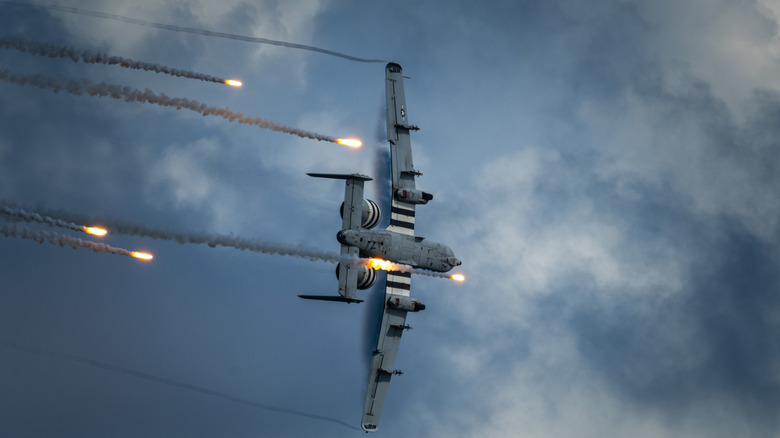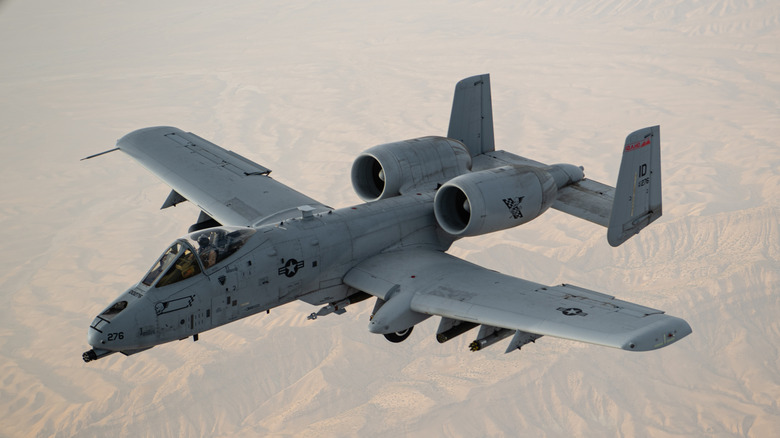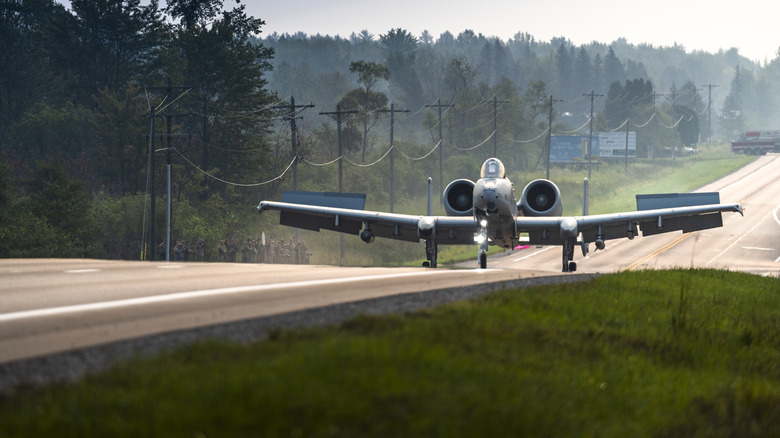Why The A-10 Thunderbolt II Uses High-Mounted Engines
Better known as the "Warthog", the A-10 Thunderbolt II stands out instantly for one major design choice — the two giant engines mounted on the back of the aircraft. When we compare it to the modern fighter jets, the design raises an obvious question: Why are the engines mounted on top? Well, nothing on the A-10 is there to make the aircraft look prettier. Every part, including the engine placement, has a very practical reason behind it.
The A-10 Thunderbolt II was built for one job, that is, close air support. That means flying low and slow over battle zones, helping troops on the ground, and taking a lot of damage while doing it. So, every part of its design is to keep the pilot alive, the mission going, and the plane in the air, no matter what. And the high-mounted engines are a big part of that mission-focused design.
It keeps the engines safe and the A-10 Thunderbolt II alive
The biggest reason why the A-10's engines are mounted high is to protect them. As the aircraft flies very low, close to dust, debris, and enemy fire, the higher placement of the engines avoids the risk of sucking in dirt, rocks, or broken parts from runways, which is quite a common problem when flying in rough conditions. Moreover, it also keeps the engines further away from small arms and ground-based missile fire.
Another benefit is how this placement protects the engines from heat-seeking missiles — a common sight on the battlefield. Because the exhaust flows over the tail and not straight out behind the wings, it's harder for infrared-guided weapons to lock on. Plus, even if one engine gets damaged, A-10s have successfully been flown back to base with just the other. That kind of redundancy is life-saving in the middle of a fight.
Battle tested design and easy to fix
Another reason for placing the engines on top is to make life easier for ground crews. The high-mounted engine design makes the A-10 Thunderbolt II easily serviceable, allowing quicker maintenance in critical situations. That means less time on the ground and more time supporting troops.
The A-10's design also keeps it remarkably stable, even at low speeds and in turbulent air, making it ideal for low-altitude flying and precise targeting. And when you consider that the A-10 sometimes lands on damaged or improvised runways, having strong, easily accessible engines that stay out of harm's way becomes a massive advantage.
Surely, the Warthog is not as sleek or fast as the other jets like a MiG-29 or the F16, but that's because it was meant to serve a different purpose. And it's incredibly good at what it does. No wonder, the A-10 Thunderbolt II has been flying strong since May 1972, getting in, taking hits, and getting out — all while keeping the pilot safe.


